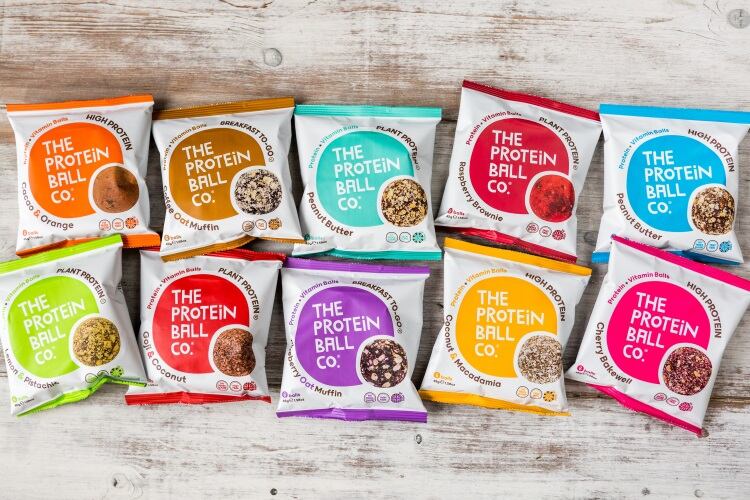
It sounds simple to give consumers a great-tasting, decadent nutrition bar. What could go wrong? Apparently, a lot and most consumers know that. According to FMCG Gurus, more than half of US consumers (54%) agreed that healthier snacks are less tasty.
But the tide could be turning.
The rise of the protein bar continues, with protein now being the top-ranked attribute that health-conscious consumers look for, according to Mintel. 48% of US consumers indicated they look at protein amount, followed by 45% who look at sugar content.
While many consumers purchase bars for their health and convenience, taste and texture can play a huge role in them to make a repeat purchase. However, dialling in nutrients while offering crave-able flavours and an enjoyable texture is an obstacle many brands face.
So, what do consumers want?
While healthful ingredients may be what consumers say they want, “taste remains king,” said Steve Adolphson, research manager at Glanbia Nutritionals. According to Mintel, after price, taste is the largest bar purchase barrier, with nearly one in three surveyed consumers who don’t purchase bars indicating it’s because they don’t taste good.
But don’t rule out texture, either. A recent survey by Glanbia Nutritionals demonstrated that 64% of US bar consumers said texture is either moderately or very important when choosing a protein bar, and ingredients impact bar texture significantly.
‘Chewy’ ranks first among 42% of bar consumers, followed by ‘crunchy’ (33%) and ‘soft’ (28%).
Taste adds another challenge. In general, Glanbia Nutritionals has noted an uptick among requests for indulgent bar formulation.
“Indulgence and health do not have to be mutually exclusive,” said Michael Levine, director product strategy, Flavours at Glanbia Nutritionals.
“We can achieve a bar that provides benefits with a delicious tasting flavour.”
All proteins are not created equal
Ingredient choices, especially when it comes to protein, can help or hurt brand owners when it comes achieving their ideal bar formulation.
One thing to consider: protein quality. Adolphson said dairy proteins provide a high-quality complete protein, or one that achieves a PDCAAS score of 1.0.
Most plant proteins, including pea protein, need other proteins to supplement their amino acid content to make them a complete protein. Often blending plant proteins can also modify textures, as they tend to be drier.
Another consideration when it comes to protein choice is texture. Plant and dairy proteins vary significantly. Even milk and whey proteins have variation. According to Adolphson, milk proteins tend to have shorter texture, while whey protein provide a chewier or dense texture. Plant proteins, like pea protein, are often gritty.
Then there is flavour. Plant proteins have an additional challenge when it comes to flavour.
“The flavour masking aspect in plant-based formulations is so much more relevant,” said Brooke Rosenthal, Glanbia Nutritionals product strategy manager, Flavours.
“In plant-based formulations, our application scientists and flavourists work together to optimise the full system.”
If dairy-based proteins provide a clean slate, plant-based formulations are a better canvas for bold flavours.
“Plant proteins impart their own inherent flavours, which can often be a challenge,” added Adolphson.
“Most of the time, brands have specific flavours in mind, but sometimes protein can help guide flavour.”
For example, pea proteins are not well suited to delicate flavours like vanilla and almond, but are better suited to more assertive notes like cinnamon or chai.
“Most of the time, we can formulate bars that match the customer’s request, but we also give them options that may be better suited and let them make the decision.”
Collaboration is crucial
So where do bar formulations go wrong? Rosenthal said bar development can get complicated if the brand doesn’t have a clear target in mind.
“A clear target with an open mind on how to get there increases likelihood of achievement.”
Another area where challenges can arise is the bench to scale up. The key to tackling those is a clear understanding from the bar formulator of processing, consistency and texture.
What’s next?
Immunity and the addition of micronutrients appear to be the next frontier in bar development. As consumers look to get more from the foods they enjoy, these benefits come with their own set of challenges. Innovation in protein continues to break barriers in snacking, including in baked goods like cookies, bites, crackers and beyond.
“We are knowledgeable in a lot of the processing aspects in bar manufacturing,” added Adolphson, noting his team works on designing bars with those aspects in mind, so scale up is easier.
“Our team can help guide our customers through the whole process. Everything from concept to prototype development to scaling up in a pilot setting in our pilot plant to assisting co-mans and troubleshooting or providing support in plant trials.”




